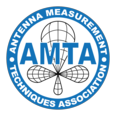Alexander Paulus, Jonas Kornprobst, Thomas Eibert, October 2022
Over the past decades, near-field (NF) measurements have been established as a reliable alternative to direct far-field (FF) or compact-range measurements for the verification of radiation properties of antennas. Quantities of interest typically include the FF characteristic obtained by means of an NF FF transformation (NFFFT), which is a computational post-processing step applied to the NF data. Common NFFFTs work with time-harmonic data and require the acquisition of magnitudes and phases of the NF samples with respect to a common reference signal. In other words, classical NFFFTs require the observed magnitude and the observed phase data to be drift-free during the time span of the complete measurement.
With increasing measurement frequency and exposed or complex measurement setups in uncontrollable environments, e.g., as encountered in outdoor NF antenna measurements with unmanned aerial vehicles (UAVs), phase stability quickly becomes a limiting factor. Therefore, nonlinear phaseless NFFFTs have been developed that do not require any phase information, which, however, heavily rely on accurate and globally consistent magnitude information and are notorious for their unreliable behavior. Recently, a linearized and reliable NFFFT operating on locally consistent, i.e., relative, phase information has been reported. By using local phase differences within the NF data, the method becomes immune to phase drifts of the reference signal. However, in real-world measurements in uncontrolled environments, drifts in the measured power or magnitude may occur as well, e.g., caused by temperature variations during UAV flights, which render common phaseless NFFFTs useless. In particular, this prevents the use of the otherwise reliable linearized transformation.
We investigate NFFFTs requiring a variable degree of global synchronization. In particular, a linearized transformation utilizing only relative, i.e., locally synchronized, information, both in magnitude and phase, is presented. It is shown that the transformation yields similarly accurate results as transformations employing global data, while being immune to magnitude and phase drifts. Furthermore, we compare the overall benignancy of a complete set of retrieval problems: completely phaseless, magnitudeless and mixed relative/global magnitudes and phases. Transformation results for simulation data illustrate the accuracy and suitability of the transformations with relative data, even for electrically large problems.
